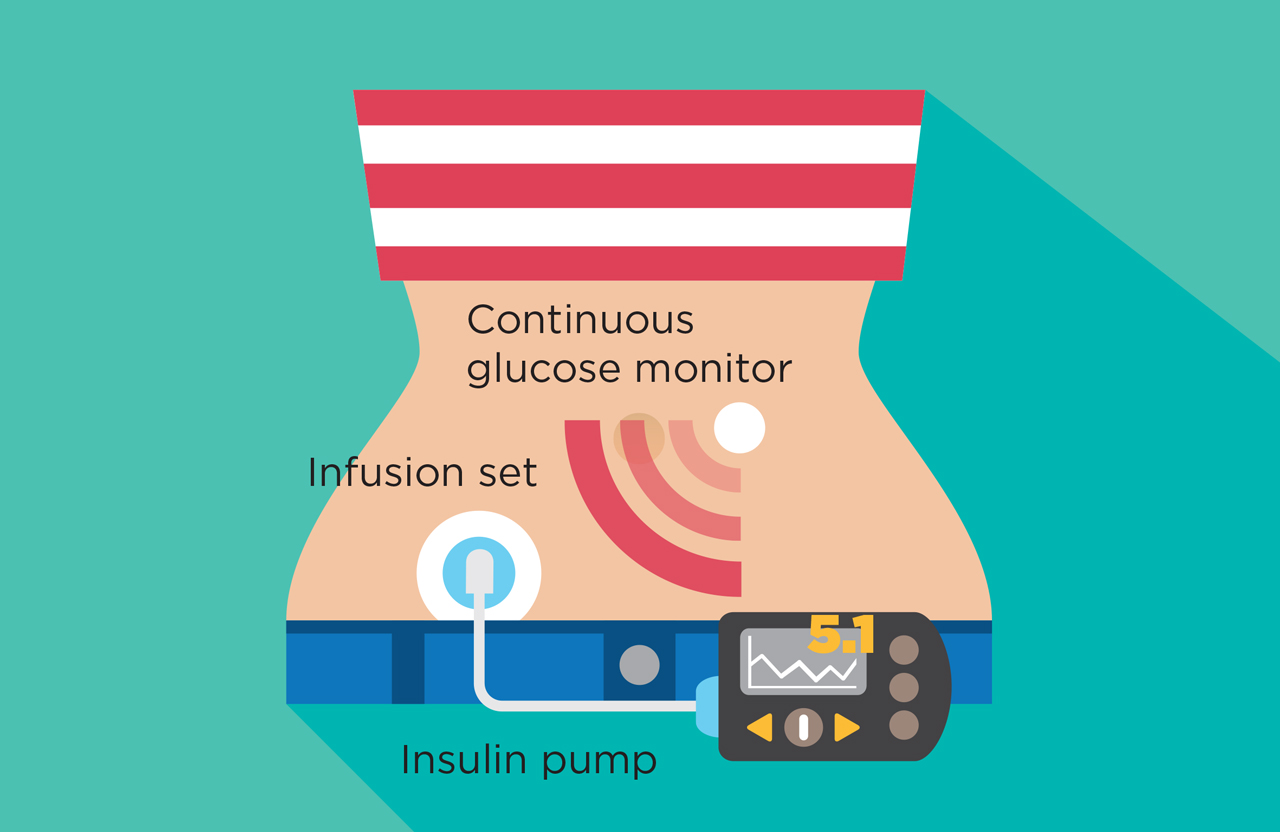Olivia C. Welter, PharmD

Patients with diabetes have been using devices such as insulin pumps and continuous glucose monitors for many years, but automated insulin delivery (AID) technologies appear to be the next big tool in the progression of diabetes technology.
In a new consensus recommendation on AID systems published in the April 2023 issue of Endocrine Reviews, Phillips and colleagues provided not only key information for clinicians to consider when evaluating AID systems as a treatment option, but also emerging knowledge on upcoming enhancements to AID systems.
Benefits of AID systems
AID systems are some of the most recent digital technologies available to patients with diabetes, adding sophisticated algorithms to closed-loop systems. Such algorithms can continuously adjust insulin delivery in response to real-time glucose levels obtained from the sensor component of the AID system. Additionally, newer versions of AID systems have sensors that do not require calibration, and automatic corrective doses of insulin are provided in response to improved adaptive algorithms. Patients can even observe in real-time how their lifestyle can affect their blood glucose level.
Studies such as the one published in NEJM on November 30, 2023, by Hughes and colleagues highlight real-world results from individual patients. Some benefits of AID systems, noted the study, include rapid decrease of measured glycated hemoglobin, better quality of life due to an easier injection process, and improved user comfort with managing extremes of blood glucose measurements.
The researchers said that AID therapy can increase the time that a patient spends in target glucose range without triggering hypoglycemia as well as reduce the burden of diabetes management among both patients with diabetes and their support system.
Target populations for AID
The study provided recommendations for which type of patients should be considered for AID system use. All patients with T1D are the primary target population, including children 7 years or older, adolescents, and adults.
Clinicians should consider recommending AID systems to older adults, children under 7 years old, and pregnant patients with T1D as well. Authors of the recommendation suggested that AID systems be permitted in hospital settings under supervision in an effort not to complicate care or confuse patients, as some institutions may revert patients back to insulin injections when hospitalized.
Barriers with digital technologies
The recommendations emphasized that although AID systems are highly beneficial for patients, there are certain barriers to using them. Clinicians must emphasize to patients that AID systems can only help make diabetes management easier, not completely replace basic skills.
Patients using AID systems as well as health care providers must be properly trained in how to use AID devices and how to troubleshoot if issues arise.
According to the authors, multifactorial racial and ethnic disparities exist in prescribing AID system technologies, meaning that some individuals who would be appropriate candidates for AID systems may be overlooked due to preconceptions and unconscious biases about the individual, their family, or their psychological attributes.
Diabetes technologies can be fairly expensive, which could cause individuals to opt out of using AID systems to save money. In addition, cost-effectiveness studies on AID technologies are scarce and little data are available to payers as they try to determine whether they will cover such systems.
New developments in AID technologies
Newer versions of AID systems that could incorporate glucagon or pramlintide delivery in addition to insulin are currently under development. These would address not only elevated blood glucose levels, but also hypoglycemia.
The researchers noted that AID systems may soon become fully automated, with inputs such as motion sensing, meal detection, and disturbance anticipation used to control blood glucose levels falling outside of target glucose ranges after a meal or during exercise.
In order for AID systems to continue being accepted by patients with diabetes as treatment options, the authors highlighted that size, shape, battery life, and customizations of AID hardware and software are crucial factors. Looking toward the future, diabetes technology companies should consider how they can continue improving these key features of their systems. ■